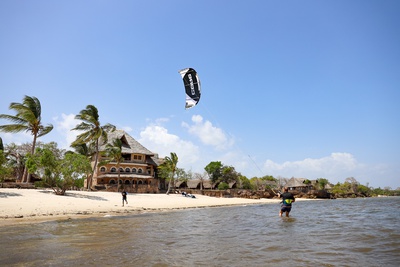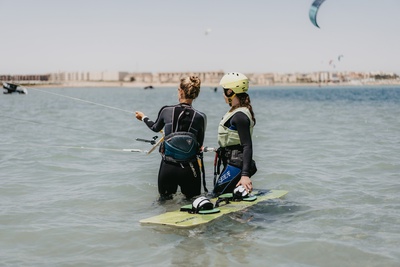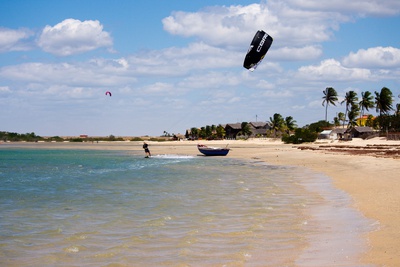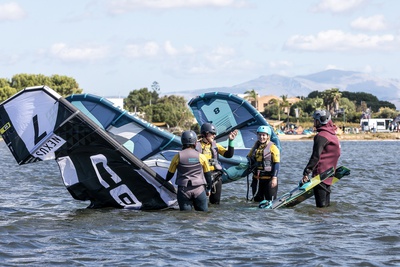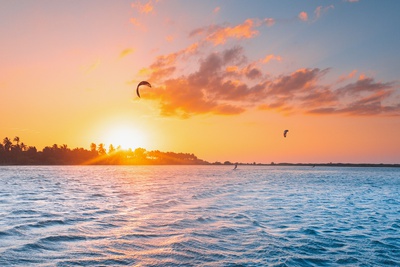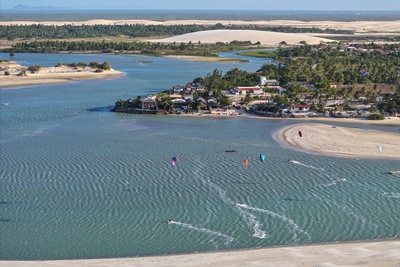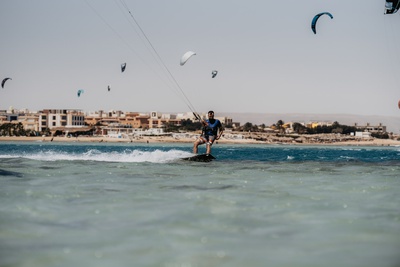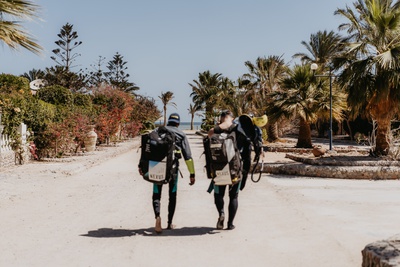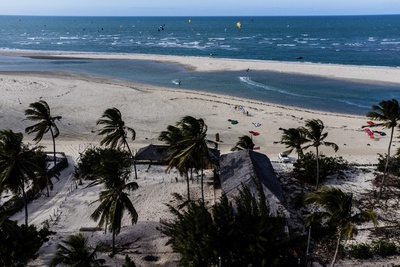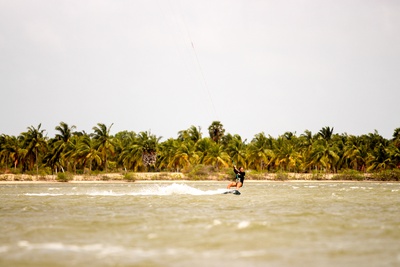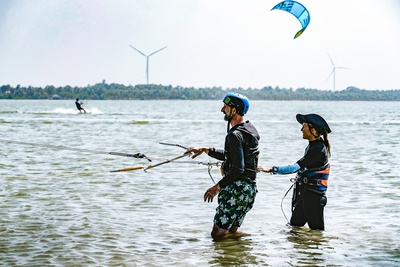How much wind do I need for kitesurfing?
Planning a complete kitesurfing holiday on your own is not that easy. Kitesurfing isn't just about finding the right spot and equipment, you also have to consider the wind and weather conditions. Especially if you're new to kitesurfing, it can be confusing when knots suddenly have nothing to do with ropes and Beaufort doesn't refer to a city in France.
To help you out, we've put together all the essential information about wind and kitesurfing. We would be happy to create a personalised offer for your first or next kitesurfing trip!
Summary
The Beaufort Scale
While browsing our website or learning about kitesurfing in general, you'll often come across the abbreviation "Bft. (Beaufort) when describing wind speeds. This refers to the Beaufort Scale, which was originally developed by the British Admiral Sir Francis Beaufort for maritime navigation to assess the behaviour of waves at sea. Today this scale is widely used by sailors, surfers and kiters to measure wind speed. The scale divides the wind into twelve levels, from calm (0) to hurricane force (12).
For kiters, the fun starts at 4 Beaufort. At this wind speed, the sea is gently moving, a moderate breeze is blowing and the first kitesurfers can hit the water with large kites and boards. With a foil board you can even start kitesurfing at 3 Beaufort. However, this wind range is reserved for experts, as the biggest challenge is getting the kite airborne in such light winds. As a beginner, you should aim for wind speeds of 4-5 Beaufort.
Knots
Wind speed can also be measured in knots instead of Beaufort. A knot is a unit of speed used in maritime contexts and is based on a nautical mile. One knot is equal to 1.852 km/h and exactly one nautical mile.
For example, 7 to 10 knots is equivalent to 3 Beaufort. At around 10 to 11 knots - the boundary between 3 and 4 Beaufort - kitesurfing becomes possible. For beginners, kitesurfing becomes really enjoyable from around 14 knots (4 Beaufort).
At around 30 knots (6 Beaufort), beginners will find it quite challenging. Professional kitesurfers, on the other hand, get excited when the scale goes above 35 knots, as it allows them to set new altitude records. At around 40 knots (8 Bft.), most kitesurfers will leave the water, and at 50 knots (9 Bft.) it becomes unkiteable.
Wind Directions
SIDE-SHORE / SIDE-ON-SHORE
For beginners and intermediate kiters, a steady wind blowing parallel to the shore (side-shore) or diagonally onshore (side-on-shore) is ideal. If something goes wrong during the launch, you won't be pulled straight ashore. Because kitesurfers ride at right angles to the wind direction, they always move away from the shore and then back again with a side or side-on-shore wind. This distribution keeps the water less crowded and if something happens further out, you'll drift parallel to the shore or slowly towards it with a side-on-shore wind.
ONSHORE
Onshore conditions are often associated with shorebreaks, making it more difficult to get started. For kitesurfers, onshore conditions are problematic because of the risk of being pulled uncontrollably over land. The wind and the kiter have to work hard to gain height to get from the shore to the open water. However, the wind is usually very consistent as it can blow freely.
OFFSHORE
Offshore wind is generally not recommended for kitesurfing. Offshore wind comes from the land, has to overcome obstacles and is often very gusty. There is also the risk of drifting, which can happen faster than you think. All it takes is for the wind to die down and you won't be able to get back to shore. It is very difficult, if not impossible, to swim against the wind with kite equipment. You should only kite in an offshore wind if you are no longer a beginner and can ride safely upwind.
Understanding these wind directions will ensure a safer and more enjoyable kitesurfing experience.
Overview
- The best wind speed for beginners is around 12-22 knots (4-5 Beaufort)
- The best wind directions are side shore and side onshore
- Avoid offshore winds
- Take breaks in extreme weather conditions
By the way: We always take the wind conditions and the spot into consideration when choosing our destinations. For a safe and relaxed kitesurfing holiday, do not hesitate to contact us for advice.
Here is a selection of our most popular destinations for beginners, offering ideal conditions for learning to kitesurf:
Learn to Kitesurf in Egypt
Seahorse Bay in Egypt is the perfect kitesurfing spot for beginners, with a large shallow area right on your doorstep. You can expect stable wind conditions, warm water and small tuition groups, giving you more space on the water and the opportunity to kite at low tide. Between sessions you can relax on the large terrace of our KiteWorldWide Kiteclub and enjoy the view of the lagoon from a deck chair. In addition, you will live exclusively with other kitesurfers and KiteWorldWide guests, with plenty of activities to keep you entertained.
- Family atmosphere at Ibi & Friends Kiteclub Seahorse Bay
- Large flat water lagoon suitable for all skill levels
- Limited spots for more space on the water
- Accommodation on site - from bed to board
- Exclusive to KiteWorldWide
Learn to Kitesurfn in Brazil
Tatajuba not only sounds beautiful, it is the perfect spot for kitesurfing. This spot boasts the best wind in Brazil, with 99% wind probability and a very long kitesurfing season from July to early February. Tatajuba offers a variety of kitespots: a flat water lagoon that reaches our accommodation Casa de Praia at high tide, endless space on the open sea and fresh water spots just a short buggy ride away. There are also regular downwinders for advanced kiters.
- 99% wind probability
- Huge flat water spot and shallow water area
- Many different kite spots
- Kite into the sunset
- Living in nature & right at the spot with pool
Learn to Kitesurf in Sri Lanka
Kalpitiya in Sri Lanka is perfect for kitesurfing beginners, with consistent wind conditions and a large flat water lagoon providing ideal learning conditions. Our KiteWorldWide Lodge is located right on the lagoon and a boat shuttle will take you to the spot. Here you have the perfect combination of excellent wind conditions, a safe learning environment, professional tuition and additional leisure activities, making Kalpitiya an outstanding destination for kitesurfing beginners.
- Huge flat water lagoon
- Professional, exclusive kite centre for KiteWorldWide guests
- Obstruction free water & sandy bottom
- High standard lodge directly on the lagoon
- Delicious full board meals
- Jungle safaris, historic towns and many other activities
